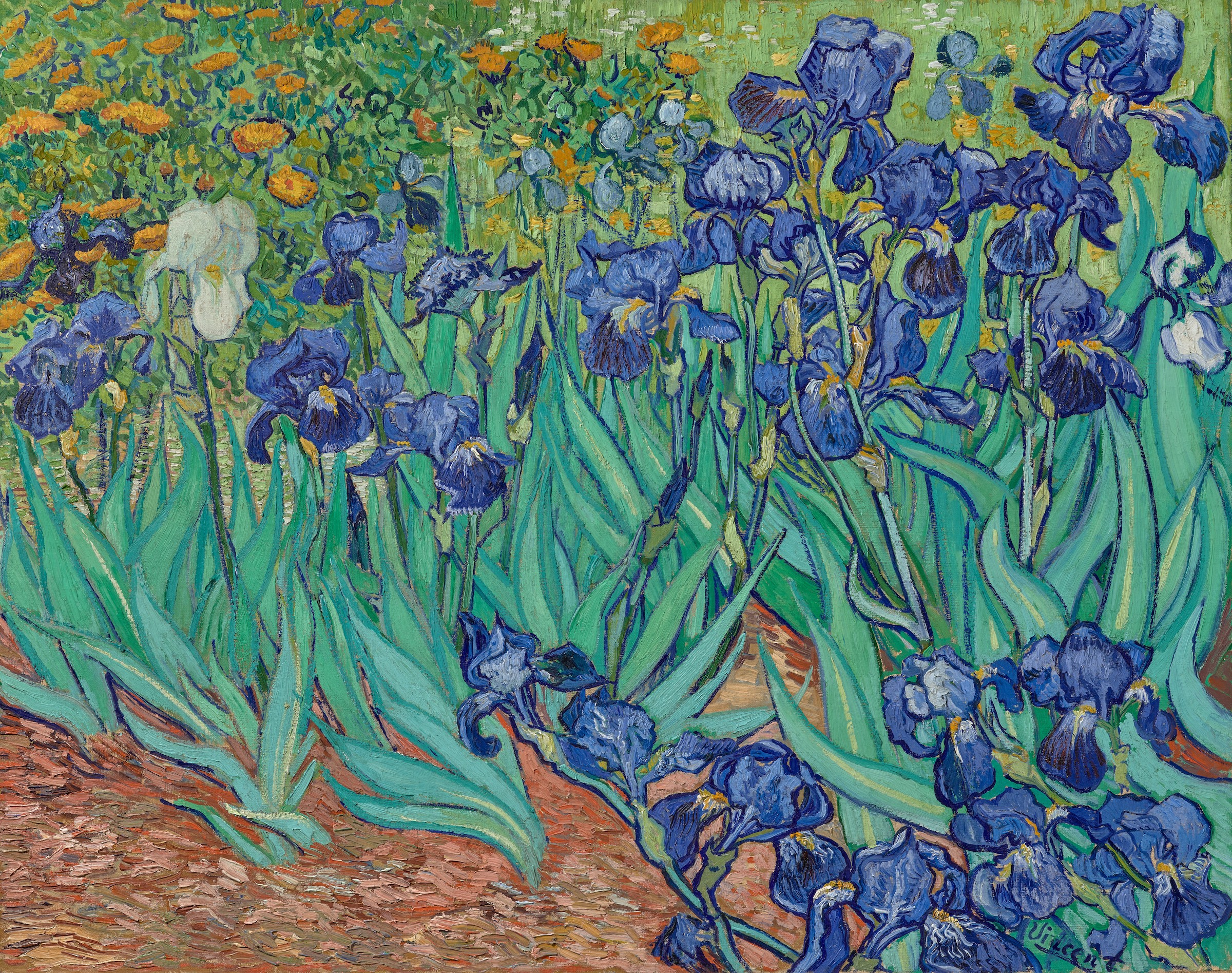A painting conservator and a chemist at the Getty Center in Los Angeles may have cracked a mystery contained in the pigment of one of Vincent van Gogh’s most famous works, produced during a fraught moment at the end of his life.
The flowers in van Gogh’s “Irises” (1889), which was the most expensive painting sold at auction at the time when it fetched $53.9 million at Sotheby’s in 1987, were never supposed to be blue, they concluded.
The Dutch painter was living in a psychiatric institution in Saint-Rémy-de-Provence in southern France after he severed his own left ear. Van Gogh had long suffered from hallucinations and depression, which have been retrospectively attributed to a number of theorized ailments including epilepsy, bipolar disorder, and psychosis. While a patient at the clinic, he was permitted to paint, completing 150 works during his one-year stay, including outdoors, where he captured scenes of the psychiatric facility’s garden, which still exists today.
Getty Museum Associate Paintings Conservator Devi Ormond and Getty Conservation Institute Research Chemist Catherine Patterson’s investigative journey into “Irises” was sparked by a letter van Gogh addressed to his brother Theo during his stay in which the artist said he was painting violet flowers.
In an interview with Hyperallergic, Ormond and Patterson said that while they had known about the letter for “many years,” confirming that the flowers had once been a hue of purple required removing the popular work from public display. When the pandemic hit, Patterson was finally able to undertake a technical analysis of the painting.

What the research team discovered, Ormond and Patterson said, was that van Gogh achieved a violet color by mixing blue with a red pigment called “Geranium Lake,” which is particularly sensitive to light and fades under chronic exposure.
“That’s why, currently, the irises appear blue, because that red component has faded,” Ormond explained.
From a chemical perspective, Patterson said, the red paint contained bromine, which broke down over time but remained in the paint. Patterson used a non-invasive technique called macro X-ray fluorescence (MAXRF) to identify bromine in the painting.

The pair curated an exhibition, Ultra-Violet: New Light on Van Gogh’s Irises, now on view at the Getty Center through January 19. The show presents their research and includes a reconstructed purple representation of the famous work. “A painting we thought we knew so well has suddenly become quite unfamiliar,” reads the exhibition text.
Ormond and Patterson said that the show gives visitors a chance to experience the painting in its intended hue.
“We’ve noticed, in the gallery, that people say [the purple] makes the image feel more three-dimensional,” Patterson said. “They can really feel that it looks like a real patch of flowers in a way they didn’t even realize.”

The fact that van Gogh painted the flowers in violet instead of blue makes sense, Ormond said, given the artist’s conception of color theory. Van Gogh paired opposite hues on the color wheel with one another, first testing pairings with yarn to avoid wasting paint. Purple and green are “opposite-ish” on the color wheel, Ormond noted, whereas blue and green are neighbors and do not enhance one another to the same extent. The curators also visited the still-standing Saint-Rémy-de-Provence hospital, observing violet irises in the gardens.
Beyond a mere scientific discovery, Ormond and Patterson say their investigation into the painting shed light on an early instance of therapeutic artmaking. The clinic’s current director has implemented an art therapy program in the present-day facility, Patterson said.

“There’s an echo of what van Gogh experienced,” Patterson said. “The specialness of the treatment he was allowed to receive that at least provided him solace, if not a cure … and the tradition continues in that very special space today.”
Patterson said the project has reminded her of why she chose her profession.
“It makes you remember why it matters to connect with these artists: They were people with histories and lives and continue to affect the lives of people today,” Patterson said.

